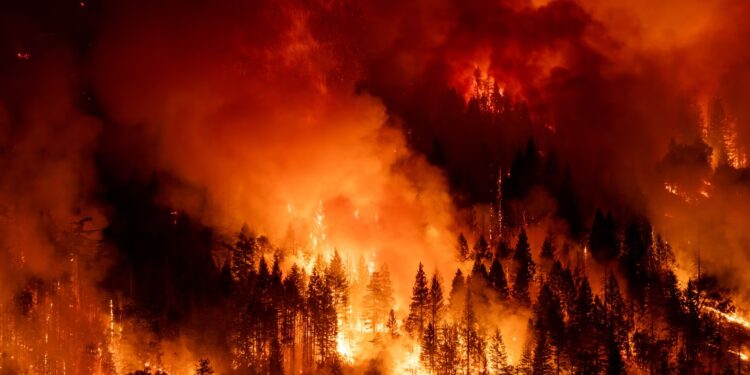The world’s forests vanished at an unprecedented rate in 2024, with wildfires driving a catastrophic surge in destruction, sounding a “global red alert” for urgent action.
New data from the World Resources Institute’s Global Forest Watch, based on University of Maryland’s GLAD Lab analysis, reveals that 6.7 million hectares of tropical primary forest—an area nearly the size of Ireland—were lost in 2024, almost double the previous year’s figure. For the first time, fires, not agriculture, were the leading cause, accounting for nearly half of tropical forest loss, up from 20% in prior years. Globally, total tree cover loss reached 30 million hectares, equivalent to Italy’s landmass, with fires emitting 4.1 gigatonnes of greenhouse gases—more than four times the emissions of 2023’s global air travel.
Latin America bore the brunt, with Brazil losing 2.8 million hectares, two-thirds due to fires worsened by its worst drought on record. Bolivia’s forest loss skyrocketed 200% to 1.5 million hectares, overtaking the Democratic Republic of Congo to rank second globally, driven by fires for industrial farming. “This signals Bolivia has become a major driver of the global climate crisis,” said Bolivian researcher Stasiek Czaplicki Cabezas, citing weak environmental oversight and policies favouring land conversion. The Amazon saw its highest loss since 2016, threatening its role as a carbon sink and raising fears of a “tipping point” where rainforests could permanently become savannas.
Fires, fuelled by climate change and El Niño’s extreme heat, also ravaged boreal forests in Canada and Russia, marking 2024 as the worst year for fire-driven loss in over two decades. “Rising global temperatures are making forests hotter and drier, more likely to burn uncontrollably,” said Professor Matt Hansen of GLAD Lab, calling the data “frightening.” Communities suffered severely, with smoke polluting air, water sources drying up, and schools closing. In Bolivia, villagers like Isabel Surubí Pesoa were forced to migrate after fires and drought destroyed local water supplies.
Despite the grim outlook, there are glimmers of hope. Indonesia cut primary forest loss by 11%, thanks to fire-control and land-restoration efforts, while Malaysia dropped out of the top 10 for tropical forest loss. These successes highlight the power of consistent policies, as seen in Indonesia’s “no burning” laws. However, 17 of the 20 countries with the largest primary forests, signatories to the 2021 Glasgow pledge to halt forest loss by 2030, are losing trees faster than when they signed.
The consequences are dire. Tropical forests, vital for carbon storage and biodiversity, are losing their ability to regulate climate. Fires released CO2 equivalent to India’s annual fossil fuel emissions, accelerating global warming. Solutions exist—stronger enforcement, community-led fire prevention, and funding for forest protection, like Brazil’s proposed $125 billion fund for COP30 in Belém. Yet, political will remains weak. “This is a collective call to action for every country and business,” said Elizabeth Goldman, co-director of Global Forest Watch. Without sustained effort, the world risks irreversible ecological and climate damage.
newshub finance



Recent Comments